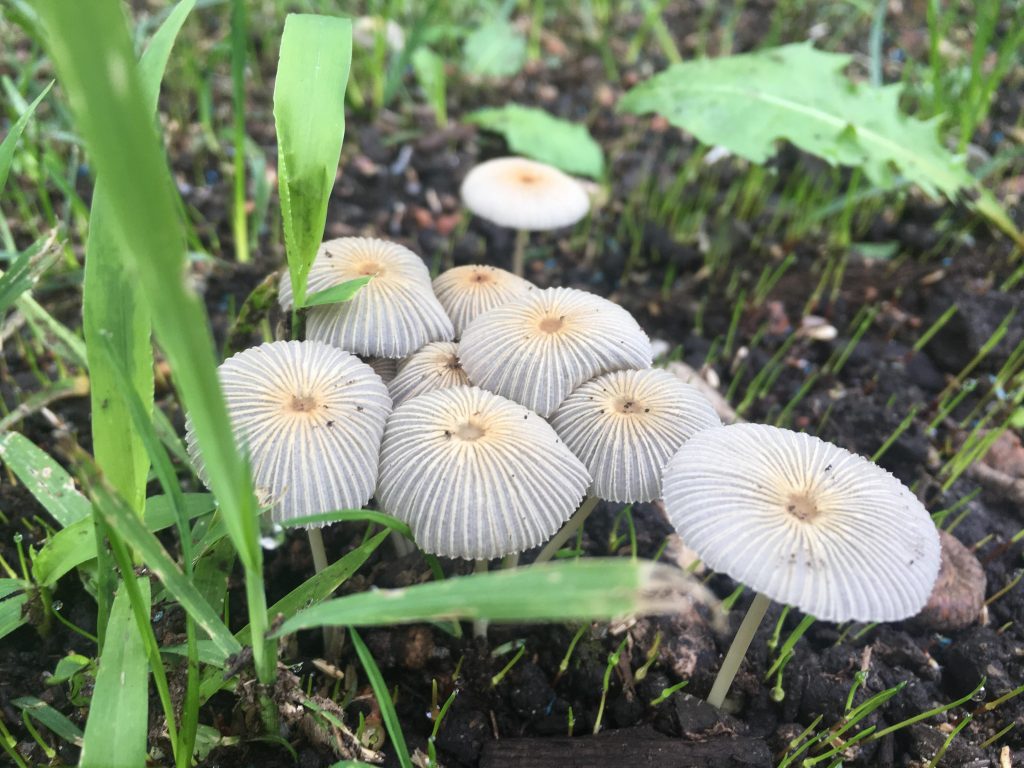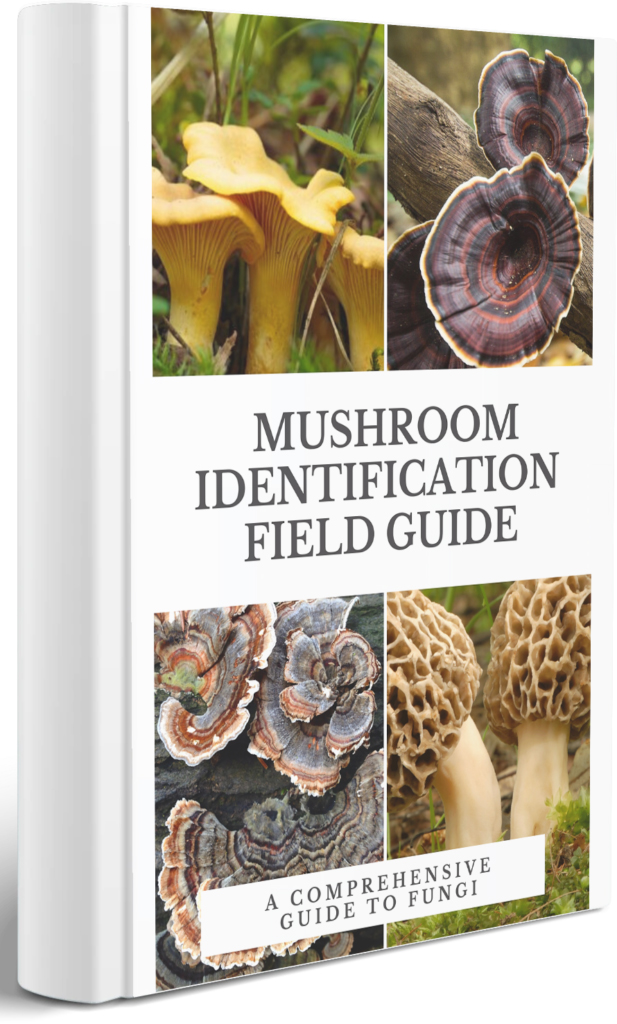“Pleated inkcap” or is a very descriptive name for this tiny mushroom with a cap that does, indeed, appear pleated. Parasola plicatilis also has the alternative common name, Japanese parasol, refers not to the species’ origin (it is very widely distributed across multiple continents) but to the fact that somebody thought it looked like a parasol made in Japan. “Inkcap” is a bit of a misnomer; there are several similar-looking species that turn to black fluid as the spores are released, but this one does not. It ought to be called the inkless cap, perhaps.
Whatever it’s called, the fruiting body never lasts very long, growing to maturity, releasing its spores, and then falling apart and rotting away completely in less than a day.
P. plicatilis[i] has no known uses to humans. It just is. And a pretty little mushroom it is, too.

My name is Austin Collins.
I've dedicated my life to Mushrooms.
I believe Mushrooms are the best kept secret when it comes to health and well being.
For that reason, I would like to share a company with you that in my opinion makes the best mushroom products on the market.
The company is called Noomadic Herbals, my favorite supplement they make is called "Mushroom Total".
I take their products every day and they have helped me think better and have more energy. Give them a try.
-Austin
Identification and Description
Cap: Very small (smaller in diameter than a US cent coin), shaped like a gradually-opening parasol. The upper surface is bald but deeply grooved. Yellowish or orangish at first, gradually becoming gray.
Gills: Not attached to the stem. Whitish initially, then darkening to gray, then black.
Stem: Thin and, proportional to the cap, very long—about three times long as the cap is wide. White.
Smell: Nothing distinctive for identification.
Taste: Nothing distinctive for identification.
Spores: Large and almost globular: almond-shaped.
Spore color: Black.
Edibility: Unknown.
Habitat: Eats dead plant matter. Fruits singly or in groups from lawns and other grassy areas. Prefers direct sunlight.
Sure identification requires a microscope, perhaps not surprising, given the small size of the fruiting body[ii]. The features to look for are the distinctive shape and size of the spores, and the absence of any remnant of a universal veil on the cap. The stem, too, lacks any trace of a veil remnant.
Parasola plicatilis Look-Alikes
P. plicatilis has a lot of very close look-alikes, plus a number of more distant ones; it is so small that even macroscopic defining characters are hard to see. Its look-alikes include:
- P. leiocephala is virtually identical except that its spores are smaller and it grows in either bare soil or shaded grass.
- P. auricoma has a darker cap and grows in woodlands or on mulch.
- P. kuehnerii is browner and grows on the edges of woodlands.
Generally, most Parasola mushrooms look very much alike, and thus are difficult to separate from each other but easy to separate from anything else, provided one looks closely and carefully—the very delicate structure combined with the black spore print is distinctive. However, to a casual glance, the group could be confused with any number of small, hard-to-identify, gilled mushrooms.
The genus also belongs to a larger group that includes some species that are edible, some that are hallucinogenic, and some that become dangerously toxic if—and only if—they are consumed with alcohol[iii]. A mix-up with any of these is possible, if unlikely.
Parasola Plicatilis Benefits
P. plicatilis has no known benefits other than contributing to the delightful complexity of the universe.
Parasola plicatilis Dosage
Since P. plicatilis is not used medicinally, it has no dose.
Parasola plicatilis Toxicity, Safety & Side Effects
P. plicatilis is not known to be poisonous, but very few people ever try to eat such a tiny thing, so it’s possible it contains toxins we just don’t know about yet. The danger of mistaking a known poisonous mushroom for this one is negligible, especially if no one tries to eat the mushroom in question.
References:
[i] (n.d.). Parasola plicatilis (Curtis) Redhead, Vilgalys & Hopple—Pleated Inkcap.
[ii] Kuo, M. (2011). Parasola plicatilis.
[iii] Roehl, T. (2017). #177: Coprinoid Mushrooms.





Thanks a lot.
Hello, could I send you a pic of what I think is the ink cap? I’m an herbalist of 20 years yet fairly new to the fungi proper identification ( atleast with confidence) . There are so many doppelganger. I’ve foraged recently finding lions mane,true turkey tail and reishi of course some morels, oyster, chicken of the woods and chantrells which to my knowledge these few fungi have less look alike than perhaps the ink caps. I’m from the southeast therefore have found cubensis and perhaps some panaelous ( maybe panaelous) . Anyways I appreciate your input.
I think, im starting to use this website a lot in the meantime. love ❤️
Love to hear that!
What a fantastic present. Thank you.
So many fungi. So little research into their medicinal effects.
Paul Stamets is an inspiration.
There must be a cornucopia of natural therapeutic mushrooms waiting to be discovered and curious researchers. Time to get organized.
I’ve taken up gardening with my wife after we got married. Part of this has been composting, the first compost run has introduced something to all our dirt. This mushroom in all ways resembles a pleated inkcap. Excluding tiny white hairs that gather in clumps on top of the cap as it unfurls. And your overview has been the first helpful information I’ve found. Thank You.
Yes thank you! My grandma has been recently growing them in our garden! This was so helpful! 💕
Thank you so much for this article. These little guys have been popping up in my raised flower bed in SoCal. I was worried it would contaminate the soil my veggies are growing in. Perhaps we’re over watering.